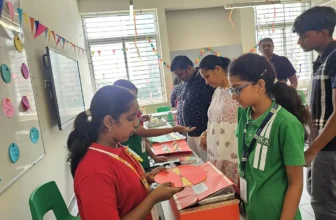
Introduction
Assessment is a vital part of the educational process, acting as the backbone of effective learning. It not only measures student knowledge but also informs teaching practices and enhances the overall learning experience. Think of assessment as a GPS for education—it helps navigate the journey of learning, providing crucial feedback and guiding both teachers and students toward their destination: academic success. For those seeking further assistance, Assessment Help can provide additional resources and support to maximize the benefits of assessments in the learning journey.
Types of Assessment
Formative Assessment
Formative assessments are ongoing assessments that occur during the learning process. Their primary purpose is to monitor student learning and provide continuous feedback. Think of them as checkpoints on a road trip—small stops that help you gauge whether you’re headed in the right direction.
Examples:
- Quizzes and polls
- Class discussions
- Homework assignments
Summative Assessment
On the flip side, summative assessments occur at the end of an instructional unit, evaluating what students have learned. These assessments provide a final check on learning, much like a report card at the end of the semester.
Examples:
- Final exams
- End-of-term projects
- Standardized tests
Diagnostic Assessment
Diagnostic assessments are used to identify students’ strengths and weaknesses before instruction begins. They act like a pre-test, providing valuable insights into what students already know, which can inform lesson planning.
Examples:
- Pre-tests
- Skills assessments
- Surveys about prior knowledge
Norm-Referenced vs. Criterion-Referenced Assessment
It’s essential to understand the difference between these two types of assessments. Norm-referenced assessments compare a student’s performance to that of their peers, while criterion-referenced assessments measure student performance against a set standard.
The Impact of Assessment on Student Learning
Feedback for Improvement
One of the most significant roles of assessment is to provide feedback. Timely and constructive feedback allows students to understand their progress, identify areas for improvement, and make necessary adjustments. It’s like having a coach who guides you, helping you refine your skills.
Motivational Factors
Assessments can also motivate students. When assessments are designed thoughtfully, they can encourage a growth mindset, where students see challenges as opportunities to learn rather than obstacles. How often have you seen a student light up after mastering a difficult concept?
Self-Assessment and Reflection
Encouraging students to assess their own work fosters reflection and critical thinking. Self-assessment helps students take ownership of their learning, building confidence and independence. It’s a bit like looking in a mirror—students see their progress and areas needing attention.
Assessment Strategies
Rubrics and Scoring Guides
Using rubrics can clarify expectations and make grading more transparent. They help students understand what is needed to achieve a specific grade, guiding their efforts. Think of rubrics as roadmaps that lead to success.
Peer Assessment
Peer assessment not only involves students in the evaluation process but also encourages collaboration and communication. By reviewing each other’s work, students gain different perspectives and enhance their understanding of the subject.
Technology in Assessment
In today’s digital age, technology plays a crucial role in assessment. Online quizzes, interactive platforms, and data analysis tools can provide instant feedback, making assessments more engaging and efficient. Imagine the ease of taking a quiz on your phone—no paper, no hassle!
Challenges in Assessment
Test Anxiety
One significant challenge in assessment is test anxiety, which can hinder performance. Students may know the material but struggle to express their knowledge under pressure. Creating a supportive environment and using varied assessment methods can alleviate this.
Cultural Bias
Cultural bias in assessments can disadvantage certain groups of students. It’s essential to design assessments that are fair and representative of diverse backgrounds, ensuring all students have equal opportunities to succeed.
Reliability and Validity Issues
Reliability and validity are crucial for effective assessments. An assessment must consistently measure what it claims to measure. If it doesn’t, the results could lead to misunderstandings about a student’s abilities.
Best Practices for Effective Assessment
Aligning Assessment with Learning Outcomes
It’s vital that assessments align with the learning outcomes set at the beginning of the course. This alignment ensures that assessments accurately reflect what students should know and be able to do by the end of the instruction.
Continuous Improvement
Assessment shouldn’t be a one-time event. Continuous improvement means regularly evaluating and refining assessment practices based on feedback and student performance.
Engaging Students in the Assessment Process
Involving students in the assessment process can enhance their learning experience. This could be through self-assessment, peer reviews, or discussions about what effective assessment looks like. When students are engaged, they become active participants in their learning journey.
Conclusion
In conclusion, assessment plays a pivotal role in enhancing student learning. It provides essential feedback, motivates students, and helps teachers tailor their instruction to meet students’ needs. By employing effective assessment strategies and best practices, educators can create a learning environment that supports growth, understanding, and academic success. Remember, assessment isn’t just about testing—it’s about fostering a love for learning and helping students reach their full potential.
FAQs
1. What is the primary purpose of assessment in education?
The primary purpose of assessment is to measure student understanding and progress, providing feedback that can inform teaching practices and enhance learning.
2. How can assessments motivate students?
Well-designed assessments can motivate students by encouraging a growth mindset, allowing them to see challenges as opportunities to learn and grow.
3. What are some common types of assessments?
Common types of assessments include formative assessments (like quizzes), summative assessments (like final exams), and diagnostic assessments (like pre-tests).
4. How does feedback from assessments enhance learning?
Feedback helps students identify their strengths and weaknesses, guiding them on what to improve and encouraging them to take ownership of their learning.
5. What role does technology play in modern assessment?
Technology enhances assessment by providing tools for instant feedback, interactive quizzes, and data analysis, making the process more engaging and efficient.







